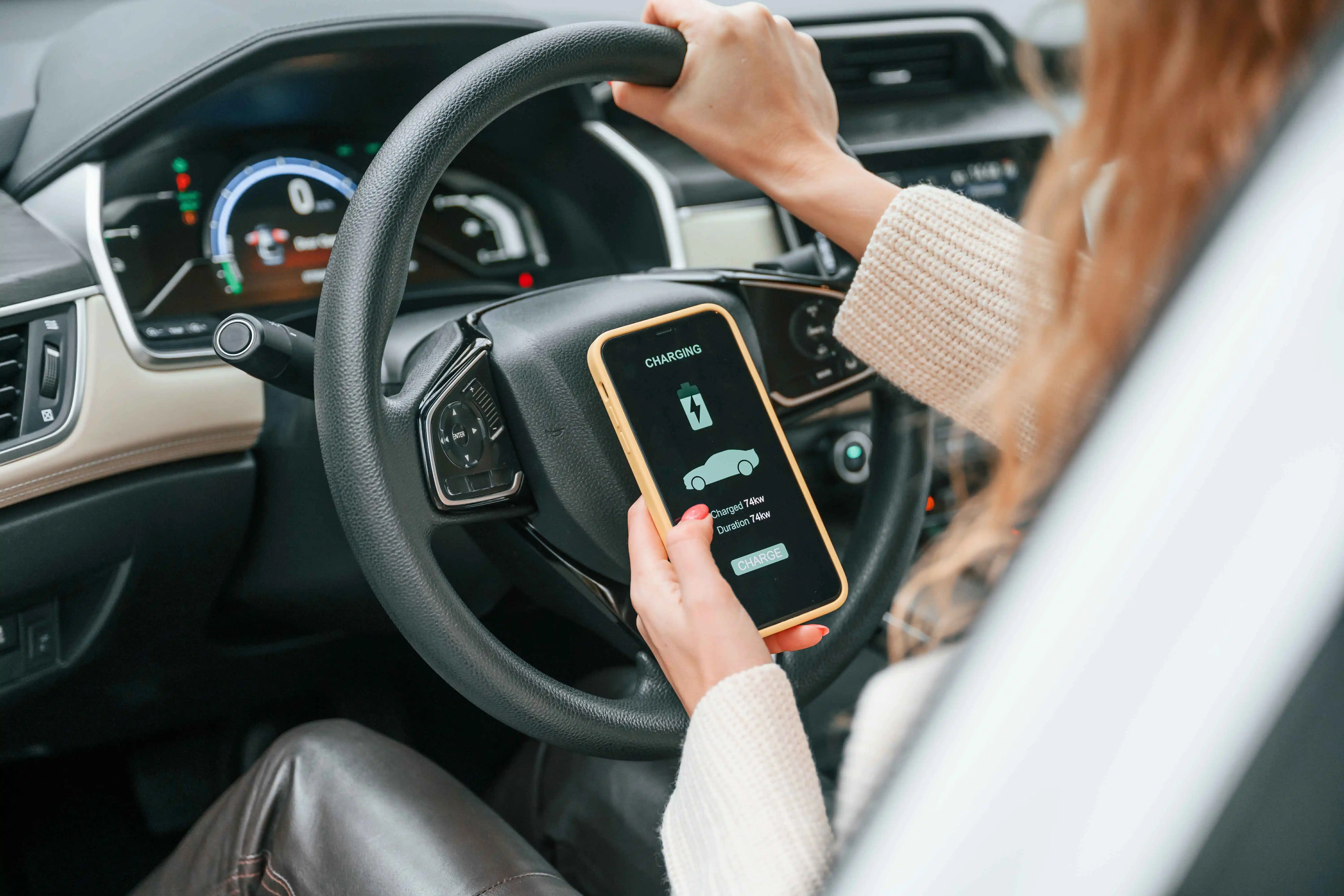Electric vehicle (EV) technology is evolving rapidly, bringing innovative charging solutions to the forefront. Bidirectional EV charging stands out as a breakthrough, enabling EVs to not only charge but also discharge energy back to the grid or other systems. This capability transforms EVs into mobile energy storage units, offering significant benefits for both owners and the energy infrastructure. In this article, we will delve into bidirectional EV charging, covering its operation, types, advantages, and future applications. Discover how this technology is poised to revolutionize electric mobility and energy management.
In this article:
What is Bidirectional EV Charging?
How Bidirectional EV Charging Works
Different Types of Bidirectional EV Charging
Pros and Cons of Bidirectional EV Charging
Current and Future Applications of Bidirectional EV Charging
The Impact of Bidirectional EV Charging on the Energy Grid
Case Studies and Real-World Examples
What is Bidirectional EV Charging?
Bidirectional EV charging, or vehicle-to-grid (V2G) technology, allows electric vehicles to both receive power from the grid and supply power back to it. Unlike traditional one-way charging, this advanced system enables a two-way energy exchange, transforming EVs into flexible energy resources.
Utilizing sophisticated power electronics, bidirectional charging not only charges the vehicle’s battery but also discharges stored energy when needed. This supports applications like grid balancing, emergency power supply, and optimizing energy costs.
In essence, bidirectional EV charging enhances the utility of electric vehicles, integrating them into a smarter, more resilient energy ecosystem.
This technology enables vehicles to act as mobile energy storage units, promoting sustainable and efficient energy management.

How Bidirectional EV Charging Works
Bidirectional EV charging operates on the principle of two-way energy flow, enabled by advanced power electronics and control systems. Here’s a breakdown of how it works:
- Charging Mode: When plugged into a charging station, the EV draws electricity from the grid to charge its battery, similar to traditional EV charging.
- Discharging Mode: In discharging mode, the EV sends stored energy back to the grid or to a building’s electrical system. This is facilitated by an inverter that converts the DC power stored in the EV’s battery into AC power, compatible with the grid.
- Control Systems: Sophisticated control systems manage the bidirectional flow, ensuring safe and efficient energy exchange. These systems monitor grid demand, battery status, and energy prices to optimize the timing and amount of energy transfer.
- Communication Protocols: Advanced communication protocols enable seamless interaction between the EV, charging station, and grid operators, ensuring the system operates smoothly and efficiently.
Read more about EV Chargers world!
EV Chargers in Kuwait
Check It Out!
EV Chargers in Saudi Arabia
Check It Out!
Different Types of Bidirectional EV Charging
Type of Bidirectional EV Charging | Description | Benefits | Applications |
|---|---|---|---|
Vehicle-to-Grid (V2G) | Allows EVs to return excess energy to the power grid. | Supports grid stability, enables better integration of renewables, stores excess renewable energy. | Fleet vehicles, residential users. |
Vehicle-to-Home (V2H) | Enables EVs to power homes or buildings. | Increases energy independence, provides backup power, reduces electricity costs. | Homeowners, areas prone to power outages. |
Vehicle-to-Load (V2L) | Allows EVs to power individual appliances or devices. | Offers flexibility and convenience for outdoor activities and emergencies. | Camping, tailgating, emergency response scenarios. |
Vehicle-to-Building (V2B) | Enables EVs to supply power to commercial buildings. | Enhances energy management, supports demand response, lowers operational costs. | Businesses, commercial properties. |

Pros and Cons of Bidirectional EV Charging
Pros | Description |
|---|---|
Cost Savings | Consumers can reduce electricity bills by using stored energy during peak times and sell excess power back to the grid. |
Backup Power Supply | Vehicles can provide a reliable energy source during outages. |
Increased Energy Independence | Homeowners and businesses can rely more on their own stored energy, reducing dependence on the grid. |
Cons | Description |
|---|---|
Battery Degradation | Frequent charging and discharging can reduce battery lifespan. |
Infrastructure Requirements | Requires specialized infrastructure, which can be expensive and complex to install. |
Limited Vehicle Availability | Currently, only a few EV models support bidirectional charging, limiting consumer choices. |
Current and Future Applications of Bidirectional EV Charging
1. Grid Integration and Energy Resilience
Bidirectional EV charging plays a pivotal role in grid integration and energy resilience, allowing electric vehicles to serve as mobile energy storage units. By leveraging vehicle-to-grid (V2G) capabilities, EVs can store excess renewable energy and discharge it during peak demand periods, reducing strain on the grid and enhancing overall energy reliability.
2. Renewable Energy Optimization
In the realm of renewable energy optimization, bidirectional EV charging enables the effective integration of solar and wind power into the grid. Electric vehicles can absorb surplus renewable energy during periods of high generation and release it when demand exceeds supply, effectively balancing the grid and maximizing the utilization of clean energy resources.
3. Emergency Backup Power Solutions
Bidirectional EV charging offers robust emergency backup power solutions for homes, businesses, and critical infrastructure. In the event of grid outages or natural disasters, electric vehicles equipped with V2G technology can seamlessly transition to provide reliable power, ensuring continuity of operations and enhancing community resilience.
4. Demand Response and Grid Management
Utilities leverage bidirectional EV charging for demand response initiatives and grid management strategies. Through intelligent charging algorithms and V2G capabilities, EVs can adjust their charging and discharging patterns based on grid conditions, supporting grid stability, reducing peak demand, and mitigating grid congestion.
5. Commercial and Industrial Applications
In commercial and industrial settings, bidirectional EV charging offers innovative solutions for energy management and cost optimization. Fleet operators and businesses utilize V2G technology to balance energy loads, reduce electricity expenses, and support sustainability goals, thereby driving efficiency and competitiveness.
6. Smart City Integration
As cities embrace the transition to smart, sustainable urban environments, bidirectional EV charging plays a crucial role in smart city integration. Electric vehicles serve as mobile energy hubs, contributing to the flexibility and resilience of urban energy systems while supporting initiatives such as electric mobility, air quality improvement, and carbon emission reduction.
7. Future Mobility and Transportation
Looking ahead, bidirectional EV charging holds immense promise for shaping the future of mobility and transportation. With advancements in autonomous driving, shared mobility, and electric vehicle technology, bidirectional charging infrastructure will play a central role in enabling seamless integration of electric vehicles into the transportation network, fostering sustainability and innovation.

The Impact of Bidirectional EV Charging on the Energy Grid
Bidirectional EV charging transforms energy consumption and distribution, enhancing grid stability, efficiency, and sustainability.
1. Grid Stability Enhancement
Bidirectional charging balances grid dynamics, regulating voltage and frequency to minimize disruptions and improve resilience.
2. Renewable Energy Integration
By storing and injecting surplus renewable energy, bidirectional charging supports the seamless integration of solar and wind power into the grid.
3. Demand-Side Management
Smart charging algorithms optimize energy usage, reducing peak loads and minimizing strain on the grid infrastructure.
4. Grid Congestion Alleviation
Vehicle-to-grid capabilities relieve grid congestion by injecting stored energy during peak demand periods, enhancing efficiency.
5. Grid Modernization
Integrating bidirectional charging infrastructure modernizes the grid, enhancing flexibility and resilience for future energy needs.
6. Energy Security
Diversifying energy sources and empowering consumers with V2G capabilities enhances energy security and independence.
7. Regulatory Considerations
Supportive regulatory frameworks are crucial for incentivizing bidirectional charging deployment and ensuring interoperability.
Case Studies and Real-World Examples
Exploring successful implementations of bidirectional EV charging reveals its practical benefits and potential for widespread adoption.
Nissan Leaf Vehicle-to-Grid Trial (UK) Nissan’s large-scale UK trial deployed bidirectional charging with Nissan Leaf EVs, demonstrating V2G technology’s role in grid stability during peak demand and providing financial incentives to vehicle owners.
University of Delaware V2G Pilot Program (USA) This pilot program showcased bidirectional charging in a university setting, effectively managing energy demand, reducing campus energy costs, and contributing to grid stability through aggregated EV batteries.
PowerFlex V2G Integration (Japan) PowerFlex integrated bidirectional charging into their EV network, encouraging vehicle owners to supply surplus energy to the grid during peak demand with dynamic pricing incentives, managing energy loads efficiently.
EnergyAustralia Electric Vehicle Plan (Australia) This plan incorporated bidirectional charging, allowing EV owners to monetize their battery capacity through demand response programs, earning credits or payments while supporting grid stability.
Amsterdam Electric Vehicle Pilot (Netherlands) Amsterdam’s pilot program integrated V2G technology into public charging infrastructure, reducing the city’s carbon footprint, improving air quality, and enhancing grid reliability, promoting electric mobility solutions.
Hyundai V2G Fleet Deployment (South Korea) Hyundai’s V2G fleet deployment demonstrated the scalability of bidirectional charging, supporting renewable energy integration and grid stability through a fleet of V2G-equipped EVs.
EDF Energy V2G Trial (France) EDF Energy’s trial involved residential and commercial customers, optimizing energy usage, reducing electricity costs, and supporting grid stability, paving the way for larger-scale future deployment.
FAQ
Bidirectional EV charging requires compatible vehicles equipped with bidirectional charging capabilities, which are currently limited to certain models and manufacturers.
Challenges include technological complexities, standardization issues, and potential impacts on battery longevity due to frequent cycling between charging and discharging modes.
By enabling EVs to discharge stored energy back to the grid during periods of peak demand, bidirectional EV charging supports the integration of renewable energy sources, thus reducing reliance on fossil fuels for electricity generation.





